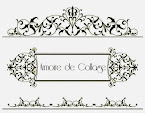

I must have lost my marbles to write an article on this subject. But don’t lose yours, because they’re becoming quite collectible. A recent increased interest in marbles peaked my interest, so I struck up conversations with marble collectors and basically it’s nostalgia that drives them to collect these miniature glass orbs. I rarely played with marbles, having lost my stash early on to my older sister who was the best marble shooter in the neighborhood. Typically a boy’s game while the girls were playing with their Barbie dolls, but not my sister. She beat the guys at their own game; a game that goes back to early civilizations. Marbles have been found in the pyramids of Egypt and in the remnants of Indian camps in North America, mostly made from clay, pottery, or stone.
Any marble champion worth his/her salt would have retained their trophies of war. So I asked my sister if she still had her marbles. My brother-in-law put in his two cents but keep in mind he’s one of the neighborhood kids who lost his marbles to my sister’s sharp-shooting skills, so consider the source. It only took a couple of minutes for her to retrieve her booty from the dark recesses of her sock drawer. Talk about a mixed bag of tricks…she had a little bit of everything. Her ‘shooter’ was among the biggest of the spheres; a huge stainless steel ball bearing and more than likely the secret to her success. Although prized in her day, stainless steel ball bearings are not a consideration for marble collectors. Also of little interest are the ‘crystals’ or ‘clearies,’ clear marbles in pale colors but with no internal swirls or bold coloring. But any marble to a marble shooter was collectible because it was all about volume. The objective was to capture all the marbles that were easy pickin’s, thus the term ‘go for all the marbles.’ Much like shooting pool, the objective was to set up your ‘shooter’ for the next shot, so marble shooters weren’t as discriminating as today’s collector.
Eye appeal is the primary consideration, but type and size also weigh heavily in whether they choose to add it to their collection. And as with almost every other antique or collectible, with the exception of primitives, condition is a major factor. The most highly-prized by marble collectors are the handmade glass marbles which are actually individual, one-of-a kind, miniature works of art glass. Although made in high volume by streamlining the process, no two hand-made marbles came out exactly alike, and among the finest were the German- produced marbles which dominated the market until imports from Germany were halted in World War 1. Among the hand-made glass designs, either rod or cane cut (the glass processes) were ‘swirls,’ which were clear glass with internal ribbons of color, and ‘opaques’ with surface ribbons of color. If handmade, it will have a pontil mark, the rough spot where the marble was separated from the rod or cane that it was produced on.
Multi-colored marbles without definitive bands of color were referred to as ‘end of day’ and were made with left-over glass, either with a clear core or a colored core. The more colors, the more collectible. Especially rare are marbles that are left-hand twisted. Inclusions like mica (metallic flakes) add to the value, especially if the marbles are swirls. And even more collectible are marbles with beautiful lutz bands, finely ground copper flakes or goldstone which were used to make metallic-like ribbons in copper or gold. According to the sharp shooter in the family, the shooters rarely played with them because their aesthetic qualities were highly prized even by marble shooters. They never risked losing their better looking marbles.
Lower on the value scale are the slags. Slag glass was a mixture of two different colors of glass, sometimes with a swirled pattern, but often irregularly patterned. On the low end of the collecting scale are the ‘clearies’ and solid-colored ‘opaques’ with no markings. They were made in such high volume and can’t command the price of one-of-a-kind art glass marbles.
Non-glass marbles in order of value include: china, which were often hand-painted; crockery, stoneware, and clay. And then there’s Agate; quartz which was hand-ground into marbles. Because agates are heavier and denser than other marbles, they were preferred as ‘shooters.’
The industrial age ushered in the machine-made marbles in the early 1900s. The first produced were actually ‘transitional’ marbles, partially made by hand and finished by machine, and were always slag-type marbles. There wasn’t much of a collector market for the machine-made marbles until the mid-1980s. Baby boomers began their nostalgic search for their childhood collectibles, and the market for hand-made marbles was becoming scarcer. Machine-made marbles were also produced in transparent (‘clearies’) and opaque, but the slags with their colorful patterns (corkscrew, swirls, and spirals) and unique names (Superman, Bumblebee, Christmas Tree, Tiger, etc.), have dominated the machine-made collector market. For in-depth information about machine-made marbles and the manufacturing companies, refer to Collectable Machine Made Marbles by Larry Castel and Marlowe Peterson. The machine-made marbles are most typical of the marbles you’ll find in the old gym sock of today’s aging baby boomer.
There are many informative books on marble values and collecting. Marble collectors would be wise to take a current issue of a book like Marbles, Identification & Price Guide by Robert Block, or Marble Mania by Stanley A. Block (possibly related to Robert Block), with them when shopping for their collection. These book s and the Internet provided much of the information contained here within.
Some of the best ways to display colorful marbles are in old Ball canning jars, in large art glass bowls, or prominently displayed on glass flower frogs. But many champion marble shooters like my sister, prefer to keep them tucked away in the back of the sock drawer, out of site from other sharp shooters.



No comments:
Post a Comment